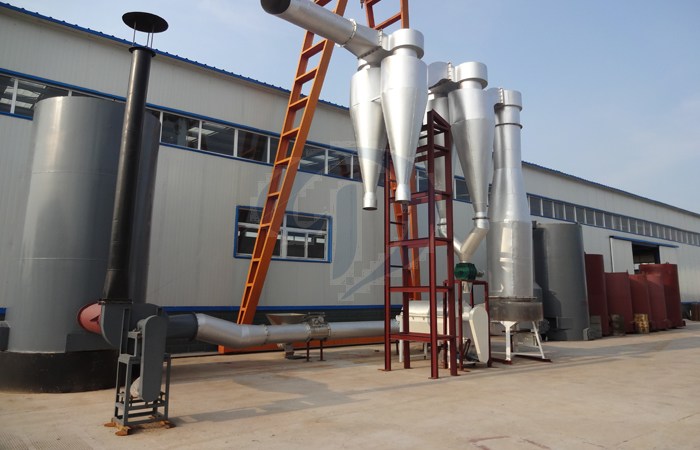New technology make cassava processing more efficient and sustainable

Cassava starch and cassava flour flash drying machine
The farming and post-harvest processing of cassava is a major economic activity throughout much of South-East Asia, Africa and Latin America.
In Africa and Latin America, cassava is a staple food for 500 million people and is increasingly processed into ready-to-cook or ready-to-eat products. Demand for these foods is rising as a result of changing expectations by growing middle-class consumers and urban populations.
In South-East Asia cassava processing for starch in particular is a major market driver, with Thailand being the world’s largest exporter of cassava products, including starch and chips.
In many countries, the processing of cassava takes place in small- and medium-scale factories where process inefficiencies, in particular energy losses, are significant and impact on both production costs and the environment.
Considering the high potential for growth of the cassava industry, driven by growing populations and economic development, it is critical to optimize cassava processing technologies to ensure the industry progresses in a sustainable manner.
The artificial drying of cassava is faster than sun drying and hence a key factor to increase the production capacity of factories. However, research shows that artificial drying represents 70-75% of the total energy used by a typical cassava starch factory, making it a key area to focus on improving energy efficiencies.
‘Flash drying’, the most suitable type of drying for cassava starch and flours, is efficient at large-scales, with 80-90% energy efficiency. However, at small-scales (less than 50 tons of product per day) where the majority of cassava processing occurs, energy efficiency is only 40-60% due to inadequate dryer designs.
To develop improved drying technologies to make the process more efficient and environmentally sustainable, the project launched a subsequent study using computer-based simulations of the flash drying operation that proved such improvements to small-scale dryers are possible.
A numerical model of flash drying to simulate and compare the drying process at small and large scales was developed, followed by methods to determine the optimum dimensions and operating conditions of flash dryers for different production capacities.
Leave a message
contact us
- WhatsApp:
+8613526615783
- Email:
sales@doinggroup.com
- Tel:
0086 135 2661 5783
- Phone:
0086 371 5677 1822
- Skype:
elina881130
- Address:
No.133 Yaozhai Road, Jinshui District, Zhengzhou City, Henan Province, China
News
-
 Cassava chips processing machine shipped to Nigeria
Cassava chips processing machine shipped to Nigeria
-
 Factors affecting the price of cassava processing equipment
Factors affecting the price of cassava processing equipment
-
 How to starct cassava production and processing business in Nigeria ?
How to starct cassava production and processing business in Nigeria ?
-
 DOING cassava starch production line successfully delivered to Nigeria
DOING cassava starch production line successfully delivered to Nigeria
-
 Cassava peeling machine shipped to Nigeria
Cassava peeling machine shipped to Nigeria
-
 What are the advantages of automatic starch production line ?
What are the advantages of automatic starch production line ?
-
 Garri processing machines and their prices
Garri processing machines and their prices
-
 New cassava slicer machine are ready to ship to Nigeria
New cassava slicer machine are ready to ship to Nigeria
-
 How profitable is garri processing business in nigeria ?
How profitable is garri processing business in nigeria ?
-
 Factors affecting the price of garri processing machine
Factors affecting the price of garri processing machine
Products
FAQ
-
 What is high quality cassava flour, how to produce high quality cassava flour ?
What is high quality cassava flour, how to produce high quality cassava flour ?
-
 How to process cassava into cassava chips ?
How to process cassava into cassava chips ?
-
 Cassava starch manufacturing process
Cassava starch manufacturing process
-
 How to maintain cassava starch processing equipment ?
How to maintain cassava starch processing equipment ?
-
 How to extract cassava starch ?
How to extract cassava starch ?
-
 How to make cassasva starch?
How to make cassasva starch?
-
 Water, electricity, steam and land deploy in starch processing plant
Water, electricity, steam and land deploy in starch processing plant
-
 How profitable is cassava starch made?
How profitable is cassava starch made?
Leave a message

Tel/Whatsapp:
+8613526615783



